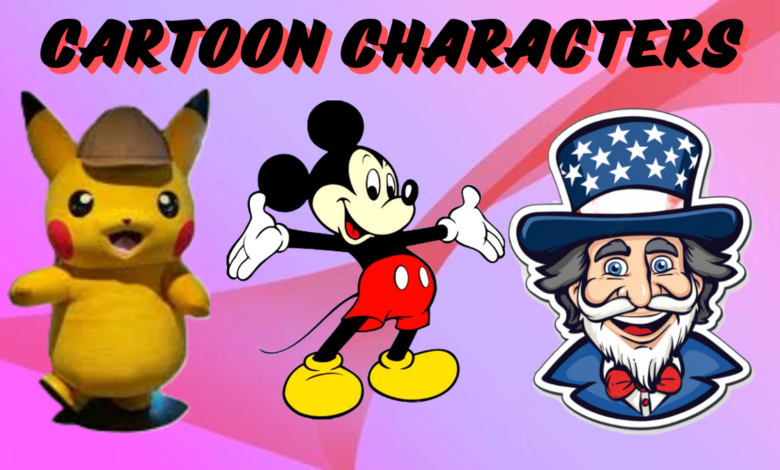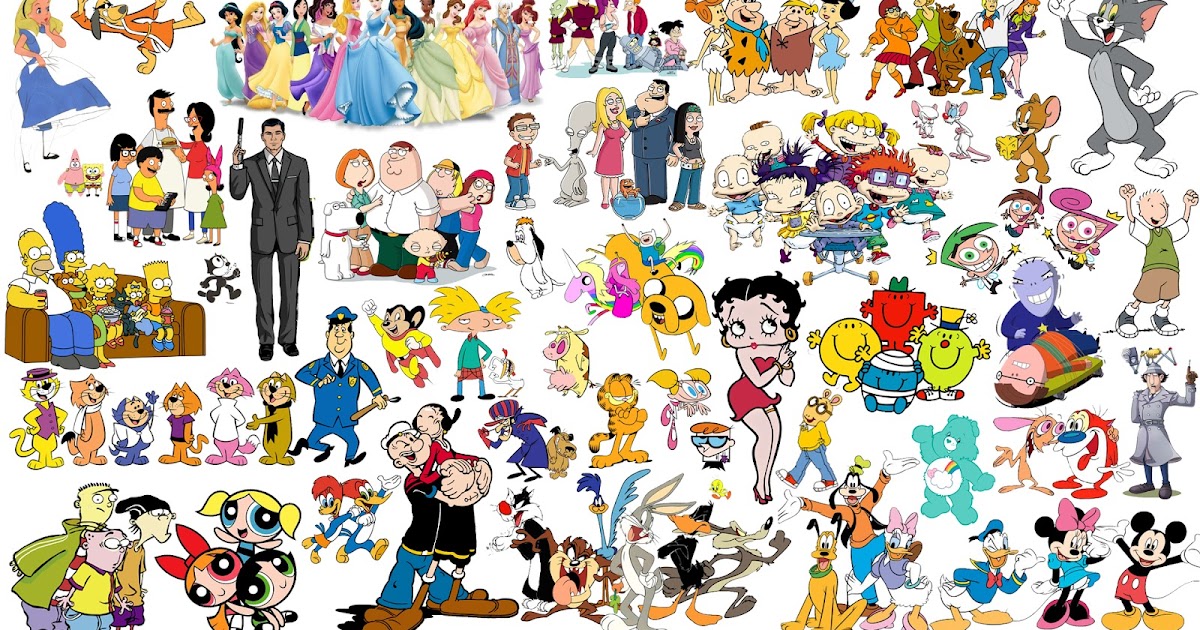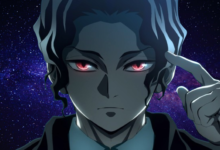The Fascinating World of Cartoon Characters: Exploring The Seductive Power Of The World

Cartoon characters have always been Friends in our lives for many generations, taking us to laughter, fun and now and then, even good lessons of life from their funny escapades. From our childhood heroes such as the Mickey Mouse to today’s animated heroes, these characters have endeared themselves into the hearts of everyone and have been instrumental in shaping popular culture beyond mere animation screen. But what do make these characters so appealing and quite easy to remember? That is why people of different ages enjoy watching the show. Here are some simple yet intriguing thoughts we might wanna turn into a series: Cartoon characters: characteristics, growth and importance.
1. The Evolution of Cartoon Characters: Drawing into the fold: Chasing the avant-garde from sketch to screen
That’s why cartoon characters were created and did not appear one day in the form that exists now. Their development is an amazing process that took place during more than a hundred years, during which the development of technologies and the change of the society affected the design of make-over and characters.
Very first cartoon characters were very basic with minimal doodling and the character had almost no movement and emotions on the face. Considering the first cartoons like Steamboat Willie, the first time which Mickey Mouse appeared on screen. It should be noted that Mickey had round, friendly faces that in design did not require much imagination, but were familiar to everyone. At these times cartoon characters would portray aspects of the human emotions and vices and hence easily related with the audience despite the over-exaggerated looks.
Over the years of animation, these techniques has been developed and with the advancement in the techniques, deeper and highly developed characters started to emerge. New technology like the computer generated imagery CGI has resulted to more complex shapes from characters, fine dynamic and more freedom in the kind of expressions displayed in today’s cartoons. Shows such as Toy Story or Frozen are clear examples of technology that has brought such characters to life and therefore makes them more engaging than ever before. In time, characters have not only become visually dynamic but with some characters taking more attributes than mere illustrations, implying deep roles such as feelings, culture and social issues.
2. Why We Connect with Cartoon Characters: Personality is a very powerful tool that can be used in a positive way.
Cartoon characters — how do they manage to linger into our minds even after the programs are off? It is, therefore, in their personalities. Favored quick characterizations are better than a simple representation of drawings on a piece of paper or a computer screen; they are carefully built characters that are created with efforts to connect and communicate. This is usually because the characters portrayed portray aspects that are felt and seen in real life; thereby, having a human like angle all through.
Look at such example as SpongeBob SquarePants to illustrate my point. This is due to aspects such as his lovable stupid and happy go lucky personality, and his rather child like curiosity. In general, stupid and hilarious, but very likeable, SpongeBob becomes an example of how ridiculous one can be and still be likeable. Likewise, the image of Bugs Bunny overcome with ‘laid-back’ talent and panache brought the audience cheer for not just comic relief, but also the confident problem solver. Viewers love his slickness and most of the time view him as the hero of the show though he is the bad guy.
Surprisingly, these personalities are worked out with the intention to capture more than one generation. Cartoons such well known personalities as Scooby-Doo or Tom and Jerry have recognizable primary characteristics – humor, bravery, curiosity at different time periods. If you have grown with them or if you are a child watching them for the first time their personalities are very lovable at first sight. This makes characters from them timeless and capable of being reproduced in ever type of cartoons of the society.

3. The Role of Design: This paper will explore the impetus for graphic designers to concentrate on the visual appeal of a given item.
Probably the single most important element of a cartoon character is the way he or she looks, given that the appearance reflects their personality. It would be worth noting that appearance is important and a character may gain viewers’ attention even before they open their mouth. As simple as the choice of colors or even the silhouettes, every aspect that an animator puts into a character is deliberate with a specific aim of portraying that character thus creating the world that they dwell in.
Now let me illustrate it with an example – Mickey Mouse, the most famous cartoon character in the world. He has round ears, this simple form of the body and high contrast of colors (red, yellow, black) was made for him to be easily recognizable from a distance. Another good thing a result of his simple design is that this little creature can be extremely emotional and that makes him adorable. For this reason, characters with fewer details and relatively ‘pure’ aesthetics are the most saleable and long-lived since they can be easily replicated and easily recognizable.
As cartoons evolved to present-day ones we also can identify the variety of characters’ designs that are closer to different cultures, personalities, and even body types. Voicing of diverse or unconventional protagonists like Moana from the Disney’s ‘Moana’ or Steven from the ‘Steven Universe’ bending the norms of cartoon, chubby, non-conforming to thin heroes that were earlier seen. These design choices do give characters a more realistic feel and consequently, the game is more acknowledgement and cast for the larger and more diversified audience.
4. The Cartoon characters as Cultural Icons
There is no way that the effects of cartoon characters could be addressed, without considering the fact that they act as cultural symbols. Some of these characters can be said to go beyond the confines of the television series, films, or cartoons to become persona, an embodiment of change in fashion, art, or even in political events.
A very apparent case is World Wide Simpsons. The controlling character of the show, Homer Simpson, self indulging, indifferent and yet lovable individual, has become an epitome of the common man. Beyond the entertainer factor, The Simpsons as a show that has been on air for more than 30 years, the show has made fun of social issues, politics and has been a critique of the human nature. Areal characters are not just entertainment—they are part of people’s ongoing dialogue or discourse that has turned into an ail.
Like batman or spiderman to begin with, these where initially characters only in comic strips but today they are important archetypes in media. These characters’ experiences are victims, protectors, and avengers that captivate the global audiences, and therefore, it amazes me that they are only cartoons. These characters usually act as fictional models of society, they depict what a society wants, what a society fears and what a society undergoes.
5. The Future of Cartoon Characters: So Now What?
Turning to the future perspective the series of cartoon characters is simply expanding and becoming more and more variegated. In today’s world, animation is not restricted only to programs for television and movies only. Thanks to video sharing services like YouTube, TikTok, and streaming services, characters and series are being created and introduced often, which means that more liberty for creativity and messing around can be done.
They also gave more representation to cartoon characters we are also seeing it nowadays. Cartoons that are produced these days such as The Owl House and She-Ra and the Princesses of Power include a gay character, something that was prohibited in children’s animation. Likewise, animated series like Avatar: It involves the use of ethnic characters and the transformation of the ideas of indigenous people regarding their status, identity and rights. This evolution calls for a future where rather than cartoons being just characters they could act as examples, those who can speak for or represent change.
Also, future trends of VR and AR that are soon to be integrated can bring drastic change in the way we engage cartoon characters. Consider experiencing a full immersion in the interaction with the animated characters being able to communicate with them in the VR space, or using AR accessories that would allow to import these characters into users’ reality. The opportunities are numerous and also with advancement in technology, there are bound to be more techniques on how the cartoon characters can be developed and how one can be able to interact with them.
Conclusion
Animated characters are far from being images and cartoons but real prototypes that can be followed along with their stories. They are characters, cultural references and dramatizations of lives that are unique and wonderfully made. Starting from simple two-dimensional cartoons to highly developed and complex characters of today cartoons are a product of gradual growth synonymous with humanity’s evolution. Next generation will also witness cartoon characters to evolve and become more diverse in the way they engage with the audience and the way they make their audience take a lighter view of things. Thus, no matter you are a child watching the first cartoon hero or an adult watching cartoon for the second time, it is impossible to argue about the distinctive features of cartoon characters’ abilities and their impact on the world.

